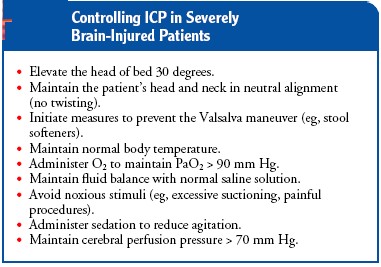Meningitis
a) What is Meningitis (1)
b) Write the aetiology and the types. Mention the organisms responsible for each type. (3)
c) Enumerat the complications. (2)
d) According to priority write Nursing Care Plan for a client with Meningitis (9)
Definition
Inflmmation of the prtotective coverings of the brain and the spinal cord (meninges)
Types & Aetiology
Aseptic - the cause is not bacteria. caused by virus or secondary to lymphoma, leukemia or brain abscess
Septic - the cause is bacteria - Neisseria meningitidis, Haemophilus influenzae, Streptococcus pneumoniae
Epidemics in dense community groups such as college campuses and military installations
Peak incidence in winter
Factors that increase the risk : tobacco use, viral URI, otitis media, mastoiditis, immue deficiency states
Pathophysiology
Infections spreading through the bloodstream from other infections
Direct spread - traumatic injury to the facial bones
Secondary to an invasive procedure
Nasopharynx - concetrates of N.meningitidis present - transmitted by secretions or aerosol contamination - the infection in the blood crosses the blood brain barrier - causes inflammation of the subarachnoid space and pia mater occurs - swelling - increased ICP - inflammatory cells enter CSF - in acute fulminant infections adremal damage, circulatory collapse, and widespread hemorrhages occur -
Clinical Features
Head ache - due to meningeal irritation
Fever - high throughout the course
Nuchal rigidity
Positive Kernig's sign
Positive Brudzinskis sign
Photophobia
Rashes in N.meningitidis infection
Purpuric spots or ecchymosis
Behavioural changes - disorientation, memory impairment, lethargy, unresponsiveness and coma
Seizures
Increased ICP - decreased level of consciousness, focal motor deficits, temporal herniation through the tentorium into the brain stem, cranial nerve dysfunction
Medical Management
Ampicillin, piperacillin, ceftriaxone, cefotaxime, vancomycin, Combinations with rifampicin intravenously.
Dexamethasone 20 mts before the first dose of antibiotic and every 6 hours for 4 days
Dehydration and shock - fluid volume expanders
Seizure - phenytoin (Dilantin)
Increased Intracranial Pressure (ICP) treated
Complications
DIC
Coma
Prevention
Vaccination against meningococcal meningitis in susceptible groups
Nursing Management
Neurologic status and vital signs continually assessed
Pulse oxymetry
Blood gas values monitored
Watch for increased ICP
Cuffed endotracheal tube / tracheostomy / mechanical ventilation if needed
BP monitored
Maintenance of fluid, electrolyte balance, avoiding fluid overload
Temperature control
Monitor body weight
Monitor urine output, specific gravity, osmolality (inappropriate antidiuretic hormone)
Protect from injury due to seizures
Prevent bed sores, hypostatic pneumonia
Follow droplet precautions for 24 hours after antibiotic to prevent spread of infection
Explain to the family about the seriousness and consequences of the disease
Allow the family members to visit the patient in the ICU periodically




